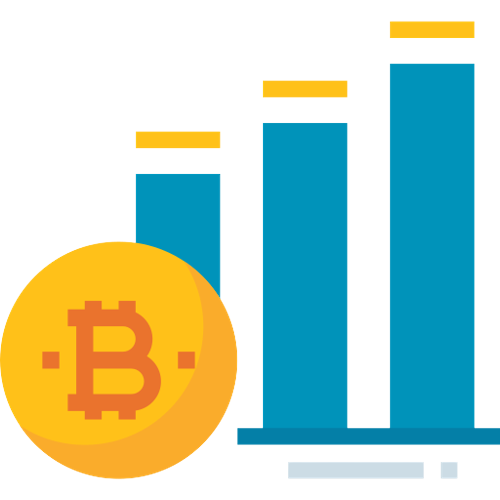
Cryptocurrency wallets that enable users to store and transact blockchain assets introduce unique security considerations. Unlike traditional bank accounts, crypto wallets rely heavily on users safeguarding their private keys and utilizing security best practices.
In this guide, we’ll cover key concepts around blockchain wallet safety including private keys, wallet types, common attack vectors, and recommended security techniques. Defining and understanding blockchain wallet risks is the first step toward protecting your digital assets.
Private Keys – The Root of Wallet Security
At its core, blockchain wallet security revolves around protecting your private keys. Private keys grant access to your crypto holdings and the ability to digitally sign transactions.
These long strings of letters and numbers are generated in pairs along with a corresponding public address:
Private key – For user eyes only, grants access and signing ability
Public address – Can be freely shared to transact with others
If someone obtains your private key, they have total control over your coins. Think of private keys like the password to your cryptocurrency bank account.
Wallets handle private key protection differently depending on type:
Hardware wallets isolate keys in offline environments
Mobile wallets obfuscate keys through encryption
Exchange wallets retain control of keys
Paper wallets enable users to completely control keys
But ultimately, blockchain wallet safety stems from how well private keys are secured. Your assets are only as secure as your private keys.
Cryptocurrency Wallet Types
There are several common cryptocurrency wallet types to consider:
Software Wallets
Software wallets encompass desktop, mobile, and web browser apps that provide private key storage and management through an accessible user interface. Examples include Bitamp, Exodus, Electrum, Mycelium, and MetaMask.
Pros: Easy to use, convenient access, and enhanced functionality through extensions.
Cons: Susceptible to hacking if device is compromised, must secure device.
Hardware Wallets
These are physical devices designed specifically to generate and store private keys offline away from internet connectivity and vulnerabilities. Top options include Ledger and Trezor.
Pros: Extremely secure cold storage, easy backups using recovery phrase.
Cons: Can be costly, and must have a device available for transactions.
Mobile Wallets
Mobile apps that enable cryptocurrency management directly on smartphones and tablets. Leading choices include Trust Wallet, Coinbase Wallet, BRDH, and ZenGo.
Pros: Convenient access on the go, digital asset versatility, tap-to-pay options sometimes.
Cons: Security is dependent on securing mobile OS, and small screens.
Paper Wallets
Keys are physically printed out or handwritten on paper without ever being digitized. Allows users to fully control keys.
Pros: Completely isolates keys from online access if done properly.
Cons: No transaction functionality, can be lost or damaged, mixed security practices.
Exchange Wallets
Hosted wallets are provided by cryptocurrency exchanges when users sign up. Consolidates assets in one account. Examples include Coinbase, Kraken, and Gemini wallets.
Pros: Easy access to trade, integrated storage on the exchange platform.
Cons: Exchange controls private keys, single point of failure.
There are also more advanced wallet types like multi-signature wallets that add customizable security layers by splitting the key. Overall, the right wallet depends on your priorities and risk tolerance.
Common Blockchain Wallet Vulnerabilities
Understanding how wallets can be compromised informs smarter security to avoid these pitfalls:

Theft of private key – Private keys saved on internet-connected devices may be remotely hacked and stolen if the device is compromised through malware. Or keys can simply be copied if accessed on the same device. Offline storage is safer.
Phishing attacks – Users are tricked into providing wallet login credentials or private keys/recovery phrases to fake websites posing as legitimate services. Crosscheck URLs.
Physical theft – If a device containing wallet access is lost or stolen, the finder can transact. Password-protect devices.
Destroyed device – If a hardware wallet or smartphone with a wallet app is damaged beyond use, backups are needed to recover.
Bad online practices – Accessing wallets on public WiFi, reusing passwords across accounts, and visiting suspicious sites can expose keys. Use common sense.
Unsupported software – Failing to update wallet software leads to outdated vulnerabilities. Always keep the software updated.
Human error – Sending to wrong addresses, forgotten passwords, or accidental deletions can cause asset loss. Take care when transacting.
For maximum safety, a wallet should generate and securely store private keys offline, provide user-controlled backups, offer two-factor authentication, maintain updated software, and institute basic security practices. Understanding risks allows for improving defenses.
Recommended Security Techniques
Now that we’ve covered vulnerabilities, here are proactive tips to maximize blockchain wallet security:
Use a hardware wallet like Ledger or Trezor for optimal offline key storage and signing security for significant holdings.
Store backups of wallet recovery phrases in physical form across multiple secure locations in case devices are lost or damaged. Never digitally.
Avoid public WiFi when accessing wallets and generating keys to prevent snooping. Use your smartphone’s mobile data if needed.
Hodl most assets in cold storage, only keeping a small amount in the hot wallet for recurring transactions. Limit exchange exposure.
Double-check addresses when copying and pasting for withdrawals/deposits. Verify the first and last few characters match at a minimum.
Create a separate email just for crypto account usage not tied to your identity. Helps avoid phishing attempts.
Secure your devices with password/pin protection, biometrics like fingerprint access, and remote wiping if devices are lost. Encrypt local backups.
Educate yourself on different wallet types, trusted brands, and security best practices before selecting a wallet. Knowledge is power.
Use two-factor authentication such as an authenticator app or hardware key to prevent unauthorized account access.
Keep software updated to ensure known vulnerabilities are patched. Turn on auto-updates where available.
Following these tips will drastically minimize risks. Protecting your private keys enables harnessing the potential of blockchain wallets while avoiding costly mistakes.
Security Tips By Wallet Type
Additionally, here are security recommendations tailored for specific wallet types:
Software Wallets

Encrypt wallet file and require password to open
Use antivirus and firewall on the device
Make encrypted cloud and local backups
Transaction signing using a USB security key
Mobile Wallets
Only install wallets from official app stores
Create an app PIN code for access
Enable remote device wipe if the phone is lost
Write down the recovery phrase as an offline backup
Hardware Wallets
Purchase directly from the vendor, not third parties
Set a strong PIN code on the device
Safely back up the recovery phrase
Always confirm transactions on the device screen
Paper Wallets
Generate keys on an offline device
Properly secure paper backups to avoid moisture/damage
Distribute copies across multiple locations
Import paper keys only when needed in small batches
Exchange Wallets
Enable all available security features like whitelisting
Use a strong unique password and 2FA
Withdraw the majority of assets to self-custodied wallets
Spread assets across multiple exchanges to diversify
Optimizing wallet security boils down to controlling private keys, avoiding user errors, and instituting strong defensive measures tailored to your wallet of choice.
Conclusion
As blockchain usage grows, security is paramount to safely interfacing with the technology and avoiding costly mistakes. Fundamentally, cryptocurrency wallet security revolves around properly handling private keys and selecting a reputable wallet that aligns with your priorities.
No wallet is perfect for every situation. Hybrid models utilizing multiple wallet types like the best Bitcoin wallet for significant holdings along with a mobile wallet for some accessible funds can achieve balance between usability and security.
Stay vigilant in your security practices and you can confidently harness the potential of blockchain while minimizing downside risks. The future of finance is here, but realizing the benefits safely requires proactive measures to lock down your digital assets.